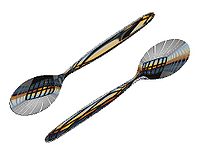Reflection mapping

Have you ever looked at yourself in a mirror and noticed how you see a reflection of yourself? Reflection mapping is sort of like that, but instead of a mirror reflecting your image, it reflects an image onto a 3D object.
Imagine you have a toy car that is completely flat, like a piece of paper. You can decorate it with stickers and paint, but it won't actually look like a real car. Now imagine you can put a special sticker on the car that reflects an image of a real, shiny car onto the flat surface of your toy car. When you look at the toy car, it will appear like a real car because of the reflection image on the sticker.
In computer graphics, reflection mapping is when a computer program adds a reflection image onto a 3D object to make it look more realistic. This is commonly used in video games and movies to create realistic looking objects like cars, water, or mirrors. It can also be used in architecture to create realistic 3D images of buildings.
Through reflection mapping, 3D objects can look more realistic and can have the appearance of shiny or reflective surfaces. It is like the object has a mirror surface that reflects its surroundings. Just like how you see your reflection in a mirror, this reflection mapping technology can make an object look like it's also reflecting its environment.
Imagine you have a toy car that is completely flat, like a piece of paper. You can decorate it with stickers and paint, but it won't actually look like a real car. Now imagine you can put a special sticker on the car that reflects an image of a real, shiny car onto the flat surface of your toy car. When you look at the toy car, it will appear like a real car because of the reflection image on the sticker.
In computer graphics, reflection mapping is when a computer program adds a reflection image onto a 3D object to make it look more realistic. This is commonly used in video games and movies to create realistic looking objects like cars, water, or mirrors. It can also be used in architecture to create realistic 3D images of buildings.
Through reflection mapping, 3D objects can look more realistic and can have the appearance of shiny or reflective surfaces. It is like the object has a mirror surface that reflects its surroundings. Just like how you see your reflection in a mirror, this reflection mapping technology can make an object look like it's also reflecting its environment.
Related topics others have asked about:
